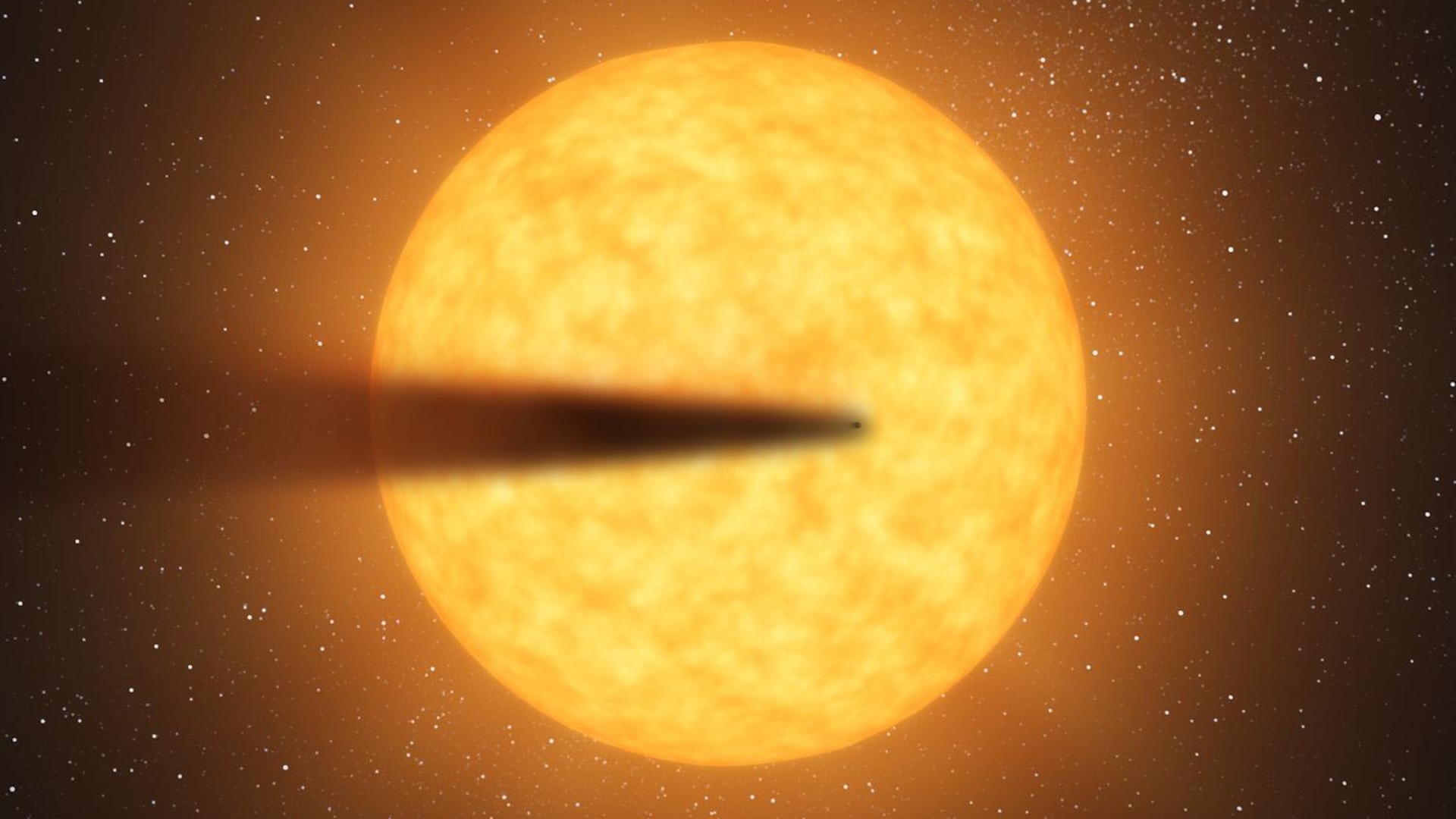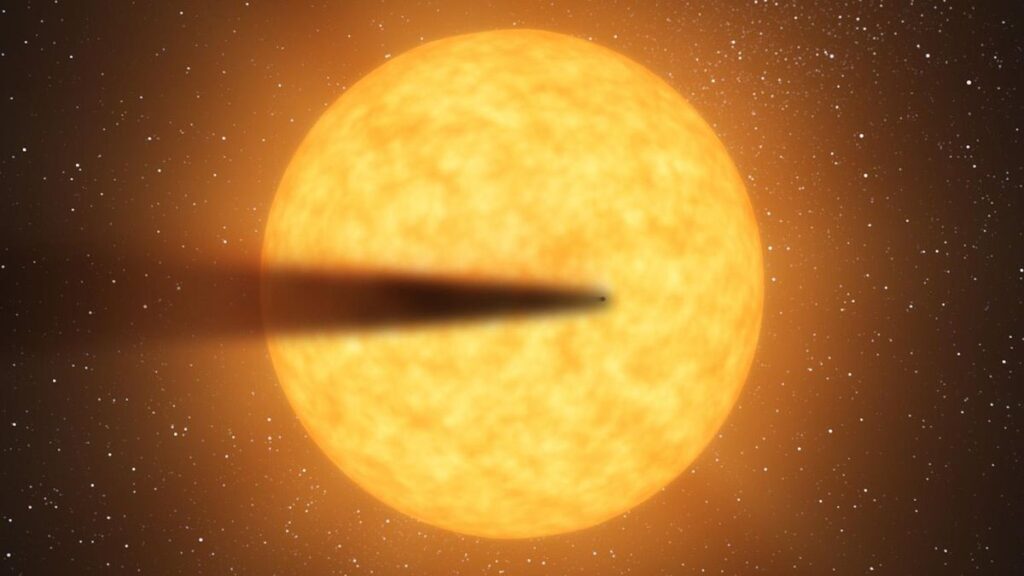
Astronomers have directly observed two worlds beyond our solar system shedding their outer layers into space for the first time. The new observations offer an unprecedented glimpse into the interiors of planets — a view that has long remained elusive, even for Earth.
The first “disintegrating” exoplanet is a Neptune-size rocky world called K2-22b, which zips around its star so closely that it completes an orbit in just nine hours. Scientists say the star’s heat literally roasts the planet: K2-22b’s surface reaches temperatures of more than 3,320 degrees Fahrenheit (1,826 degrees Celsius), which is hot enough not just to melt rock, but to vaporize it. Recent observations of K2-22b using the James Webb Space Telescope (JWST) revealed that the evaporated rock has been sculpted into an extended, comet-like tail.
“It’s a remarkable and fortuitous opportunity to understand terrestrial planet interiors,” study co-author Jason Wright, a professor of astronomy and astrophysics at Penn State, said in a statement.
But this isn’t the only evaporating planet spotted recently. Another disintegrating exoplanet circling a different star was discovered by a separate team using the Transiting Exoplanet Survey Satellite (TESS). This roasted world, named BD+054868Ab, is the closest evaporating exoplanet to Earth discovered so far.
TESS data show that BD+054868Ab sports not one, but two massive tails: a leading tail of larger, sand-size particles; and a trailing tail with smaller, soot-size grains. Together, the tails span a whopping 5.6 million miles (9 million kilometers) and occupy roughly half the planet’s orbit.
“These planets are literally spilling their guts into space for us,” Nick Tusay, a graduate student in the Penn State Department of Astronomy and Astrophysics who led the JWST study, said in the statement. “With JWST, we finally have the means to study their composition and see what planets orbiting other stars are really made of.”
Papers detailing the findings about both exoplanets have been uploaded as preprints and are still undergoing peer review.
“Who ordered that?”
The findings come after TESS and JWST observed thousands of stars, searching for subtle-yet-periodic dips of light that occur when a planet crosses in front of its star. These dips, known as transits, reveal spectral fingerprints of the planets’ chemical compositions, which allow astronomers to reverse engineer what the interiors of the crumbling planets may have once looked like.
While studying K2-22b, for instance, JWST detected gases like carbon dioxide and nitric oxide. This is unusual because these gases are typically associated with icy bodies, not with mantles of terrestrial planets, and they should have evaporated into space long ago.
“It was actually sort of a ‘Who ordered that?’ moment,” Tusay said in the statement.
Tusay and his colleague speculate that K2-22b may have originally formed farther from its star and migrated inward by gravitational perturbations, which should not be uncommon, considering the planet’s host star shares its cosmic residence with another star.
Meanwhile, BD+054868Ab is likely losing about a moon’s worth of material every million years. By current estimates, astronomers expect it will cease to exist in about 1 million to 2 million years — a blink of an eye in the typical lifespan of planets in less extreme environments, which exist for billions of years.
“The rate at which the planet is evaporating is utterly cataclysmic, and we are incredibly lucky to be witnessing the final hours of this dying planet,” Marc Hon, a postdoctoral researcher at MIT who led the discovery of BD+054868Ab, said in the statement.
James Webb Space Telescope quiz: How well do you know the world’s most powerful telescope?
